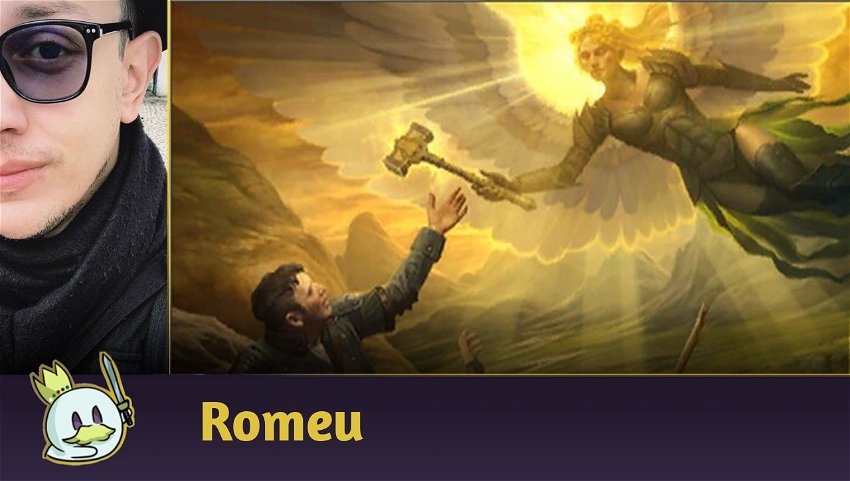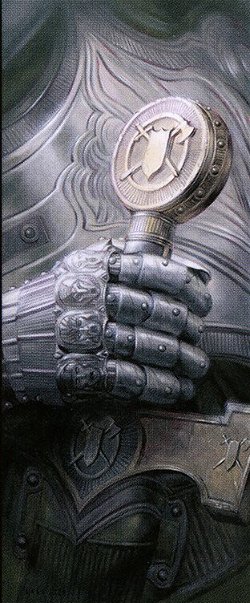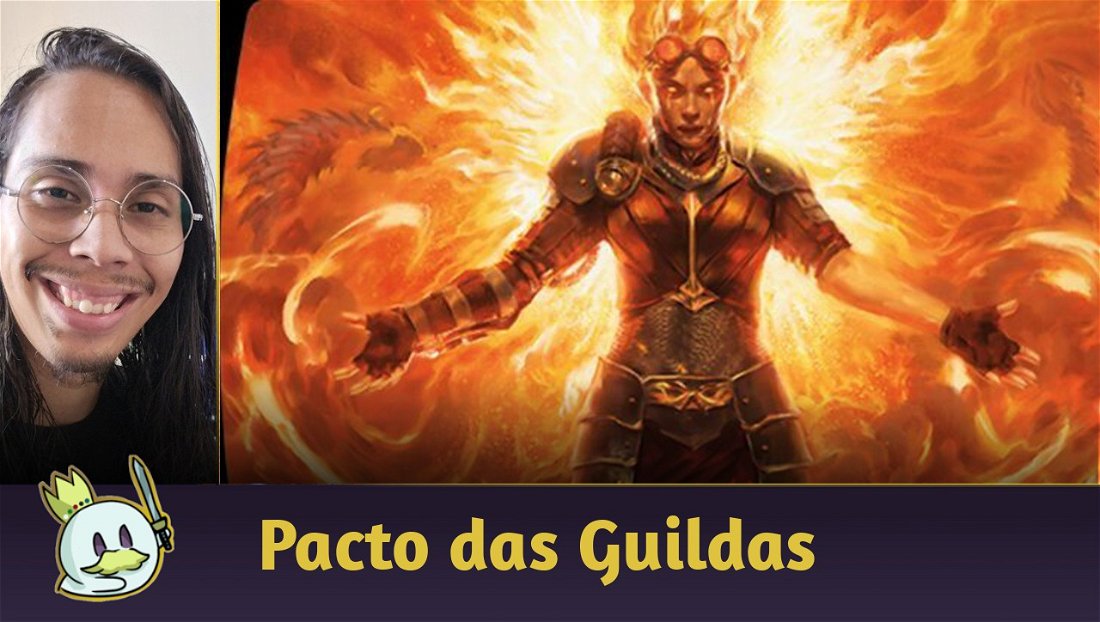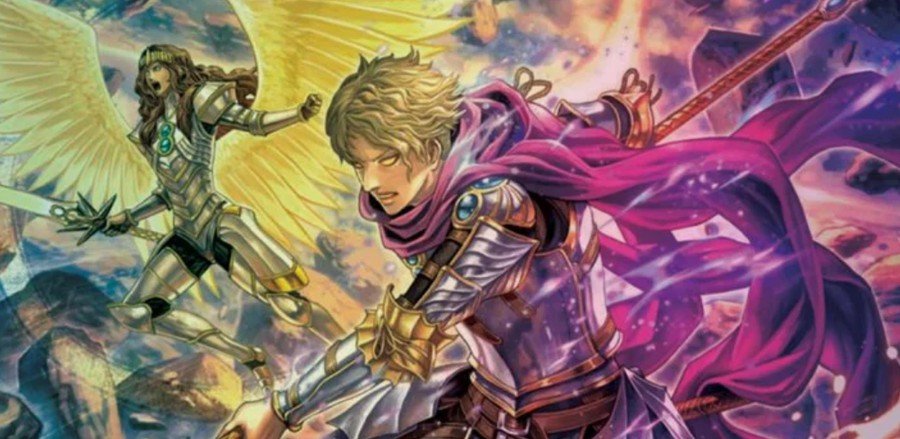Magic Arena's Best of One is a game mode that rewards quick matches, defined in a few turns and, commonly, closed based on an unbeatable sequence of creatures and spells, or through the quick assembling of a specific combo.
Among these, a deck that gained notoriety since Phyrexia: All Will be One was the Hammer Time variants in Explorer and Historic. While I intend to cover the most successful variants of Historic in a later article, today I'll cover Explorer's Boros version.
What is Hammer Time?
Ad
Hammer Time is based on a popular Modern strategy that involves circumventing the equip cost of Colossus Hammer to attach it to a creature to close out the game in a maximum of two turns. Today, it is one of the top five decks in the format, for mixing this constant combo threat with an efficient plan B with Stoneforge Mystic and Urza's Saga, cards that interact with its main theme.

In Explorer, Hammer Time is still a deck that lacks an attrition plan, and its main versions revolve around closing the combo early or preparing a setup in the first few turns to then put a creature into play equipped with Colossus Hammer.

Our main resource to attach Colossus Hammer is Sigarda's Aid. This enchantment allows you to cast equipment spells at any time in the game and attach it to any creature when it comes into play. However, since we don't have Puresteel Paladin, nor resources to create a plan B, we dedicate more slots to circumventing these costs with other cards.
The most popular version focuses on Warriors, with Resolute Strike serving as 5-8 copies of Sigarda's Aid for these creatures.
Another important piece is Kemba, Kha Enduring, which, although it doesn't equip Colossus Hammer on Warriors, it can attach the artifact to itself when it comes into play. Kemba has also motivated players to look for other variants of this strategy, but without Open the Armory in Explorer, the Boros version seems the most viable option, as it has an efficient tutor, Fighter Class.
Boros Hammer Time is a Glass Cannon archetype, meaning it has an explosive strategy, capable of winning the game as early as the second turn. However, it is also a fragile deck and very sensitive to removals, in addition to being punished for the variance of a game due to the lack of redundancy.
The Decklist
This is the Warrior version I've been playing on Best of One. It focuses on closing the game as early as possible, while having enough protection elements and enablers to ensure the strategy works, even in the face of some removals.
We can separate its cards into four categories: Enablers, Equipment, Warriors, and Protection.

The enablers.
Sigarda's Aid is the best enabler on the list, as it doesn't restrict the type of creature to be equipped, in addition to guaranteeing the possibility to cast Equipment as if they had Flash. This enchantment is usually your first turn play, except in cases where you have Cacophony Scamp or another important one-drop in your starting hand.
Resolute Strike requires a different line than Sigarda's Aid, and must be evaluated as a Plan B if the enchantment is in play. Its main function is to ensure that a Warrior you control equips Colossus Hammer, preferably after bad block decisions.
Ad
Kemba, Kha Enduring doesn't interact with any other parts in the list. However, the fact that it equips Colossus Hammer the moment it comes into play makes it an important third enabler on the list, and helps on having fewer dead cards on the list.

The equipment.
Colossus Hammer is the card we want most of the time, as it's what allows the deck to function. Hands without it are much more risky, which is why we have Fighter Class, whose function is to become "extra copies" of the hammer on our list.
Fighter Class also allows for a small equipment toolbox. But, in an open Metagame, the best options are cheap cards, which allow us to amplify the aggressiveness of our strategy and/or punish chump blocks.
To that end, we have Shadowspear as our primary target to ensure evasion, and Lifelink is a pertinent bonus on Aggro mirrors.
Rabbit Battery, in addition to being yet another creature, allows you to play a Warrior from the top, give it Haste to, in the same turn, attack and cast Resolute Strike to equip Colossus Hammer.

The Warriors.
Our main targets for the hammer are Cacophony Scamp and Fireblade Charger.
Playing a Cacophony Scamp on the first turn, equipping it on the second, and attacking with no blockers automatically wins the game, as it will deal 11 damage to the opponent, then can sacrifice itself for an additional 11 damage.
Fireblade Charger doesn't sacrifice itself, but has Haste when equipped. The moment it deals the first combat damage, we force unfavorable blocks every turn, as killing it will trigger its ability, and deal damage equal to its power to the opponent.
Kor Blademaster, despite turning any Warrior equipped with Colossus Hammer into a hit-kill, is the least impressive creature on the list due to its cost and lack of evasion. However, in addition to being another Warrior for consistency, it guarantees some explosive and unexpected plays against low removal decks alongside our protection package.

The protection.
There are a wide variety of options to protect your creatures in Explorer. In addition to the above cards, standouts include Loran's Escape, Gods' Willing, and the newly released Surge of Salvation.
I opted for Alseid of Life's Bounty in this flexible slot because it is also a creature and, if equipped with Colossus Hammer, it becomes almost unbeatable on Aggro mirrors by greatly lowering the opponent's clock potential.
At this point, Skrelv, Defector Mite is a must for any Explorer list with a "build your own Megazord" strategy. Recurring protection that also dodges blockers makes it one of the best turn one plays on this list.
As much as I would love the fourth copy of Skrelv, the fact that he is legendary makes him a poor topdeck when we already have one on the board.
Ad

Our mana base follows a basic pattern of what you'd expect from an Aggro deck in Explorer. A hefty number of duals to get access to all colors, plus up to two basic lands to avoid pseudo-locks with Field of Ruin - although if your opponent has time for this lock, you most likely already lost the game.
Mutavault is yet another Warrior to the list, which survives sweepers and can catch the opponent off guard. However, the inclusion of Fighter Class increases the need for colors to be able to run two copies. Therefore, we also have Den of the Bugbear as a late-game threat, although it doesn't interact with the combo.

We also have Jegantha, the Wellspring. While we're unlikely to have the time and mana to cast it, our list makes no concessions for having it as a Companion.
Possible Additions from March of the Machine
March of the Machine brought some useful additions to the archetype.

Surge of Salvation seems the most important because it grants Hexproof to you and permanents you control. Hammer Time is very sensitive against Thoughtseize, as our starting hand is based around a few pieces.
Having this guaranteed protection against discard that also works as protection for your creatures (including Sigarda's Aid) brings a greater level of security and consistency to the combo. On the other hand, opponents will also be able to play Surge of Salvation against Cacophony Scamp and Fireblade Charger.

Champion of the Flame already exists in Explorer and isn't good enough for the list. But in addition to the built-in evasion, Khenra Spellspear has Prowess*, and this ability makes it a more impactful threat than its predecessor, as it interacts with Colossus Hammer, Sigarda's Aid, Resolute Strike, as well as protection spells such as Loran's Escape.

In Best of One, Sword of Once and Future feels too slow. If, one day, Hammer Time gets a solid enough core to be part of the Best of Three, it and Sword of Forge and Frontier will be essential equipment on the Sideboard, or even the maindeck, to deal with certain attrition decks.
Mulligan, Tips and Postures
Mulligan
This deck has an objective strategy and requires at least three parts to work: an enabler, a creature and Colossus Hammer. Therefore, our Mulligan must prioritize having at least two of them in the starting hand.
On the play, the more aggressive your hand is, with the possibility of closing the combo in the second or, at most, in the third turn, the better. A hand that doesn't close the combo on the second turn needs protection, such as Skrelv, Defector Mite.
On the draw, prioritize having a method of protecting and/or giving evasion to your threat. Again, Skrelv, Defector Mite is your best option, but Alseid of Life's Bounty is a decent choice, particularly alongside Kor Blademaster, or Cacophony Scamp.
Ad
You can aggressively Mulligan up to four, the minimum number to have two lands, one creature, and one combo piece. Any number below that is too risky, so be careful not to trade an average hand for a bad one.
Remember that this strategy is vulnerable to targeted discard. So, holding an average six-card hand gives you more opportunities against a Thoughtseize on the first turn than an excellent five-card hand, as a large portion of the cards on the list don't do anything relevant on their own.
Postures
Boros Hammer Time's game posture is very objective. You're piloting a combo, your focus is to close that combo early, so your stance is trying to put the pieces together as soon as possible, and leave the opponent looking for answers.
Unlike Modern's version, the Explorer list plays are somewhat automatic, but consider the opponent you're up against. If their first turn demonstrates a less interactive strategy, focus on the all-in and quickly equip Colossus Hammer to force chump blocks to victory.
If the opponent has removals and counterspells, we need to evaluate the best timing to play our key cards. However, our late-game is poor, and we don't have as much flexibility to play around the opponent, so we can try to close a protection backup in one turn to execute the combo in the next, or try to execute it immediately and hope it works.
Tips and Tricks
- If your starting hand has Sigarda's Aid, Colossus Hammer and any relevant one-drop, opt for the creature on the first turn. Unless the opponent starts with Thoughtseize, you have already guaranteed the combo in the second turn.
- Multiple copies of Sigarda's Aid in play create multiple triggers when you play Colossus Hammer. If you have two creatures able to attack, you can choose different targets to force the opponent's removal on one of them and if they do so at the wrong timing, the other will be equipped anyway.
- Fireblade Charger should preferably be a turn 2 creature. In the first one, focus on playing Sigarda's Aid, or Colossus Hammer, if you have Resolute Strike in your hand.
- Don't play Colossus Hammer without a plan. It will only be equipped through other cards, and its use should be thought about based on the method you intend to circumvent its costs.
- Sounds redundant, but remember that Sigarda's Aid lets you play your Equipment as if they were Instants. You can wait for the most likely timing to decide who your equipment will target.
- If your Plan A fails, your Plan B involves creating the setup for the next opportunity to close the combo. Play your protections, your creatures, try to delay the game with chump blocks, and hope for a good topdeck.
- Against decks with white removals and/or creatures, remember to use Resolute Strike on your creature before you give it protection with Alseid of Life's Bounty.
Conclusion
Boros Hammer Time is an archetype with an objective strategy, capable of winning the game as early as the second turn. However, it still lacks the consistency and support to make impressive results in the Best of Three.
Ad
If you're looking for the deck with the fastest free-win button in Explorer, chances are you'll find a viable option in this strategy, but remember that just as many games will be won by lack of opposing interaction, others will be almost an automatic defeat because they had too many disruption and/or removals.
Thanks for reading!









— Comentarios0
Se el primero en comentar